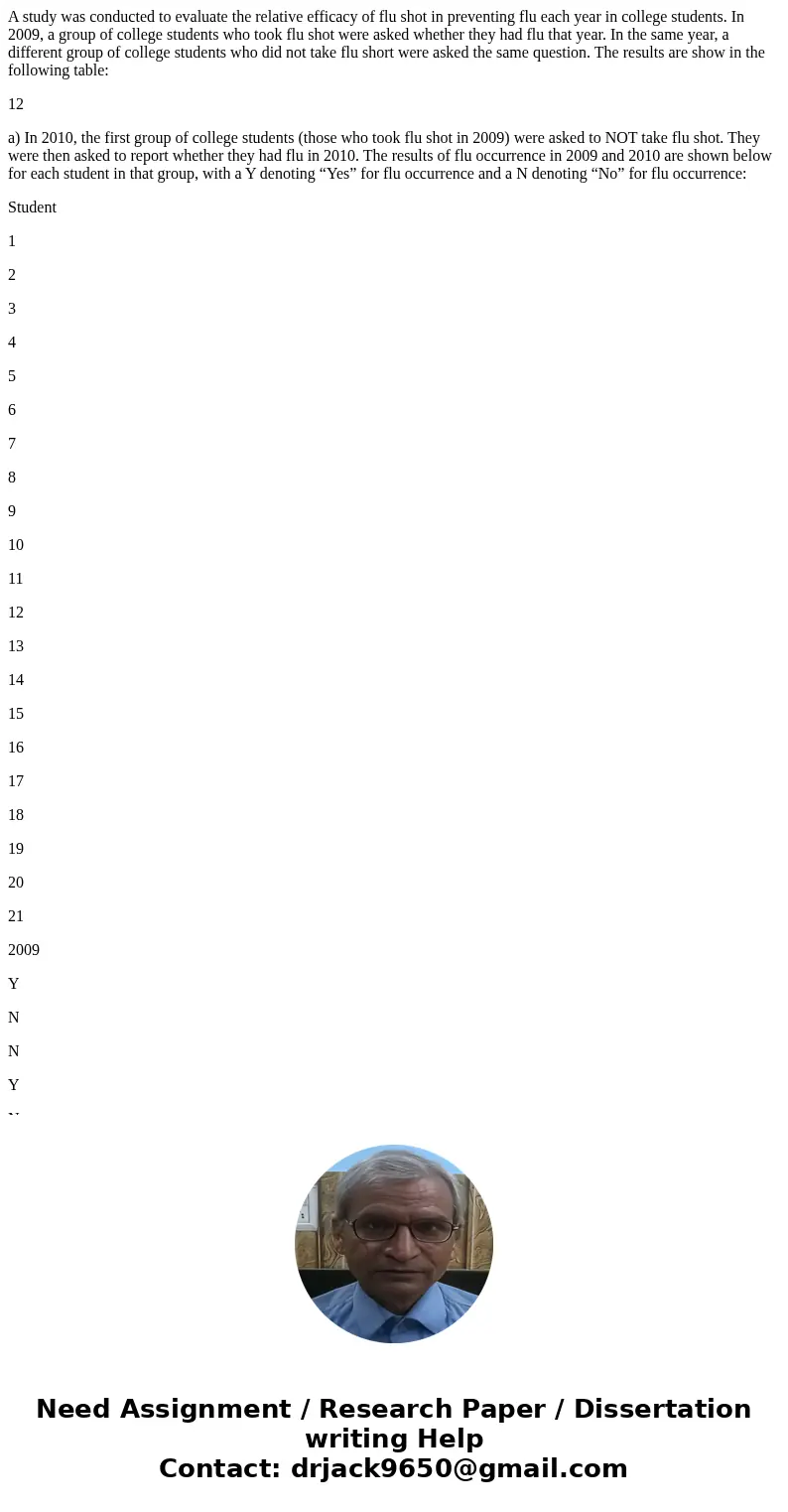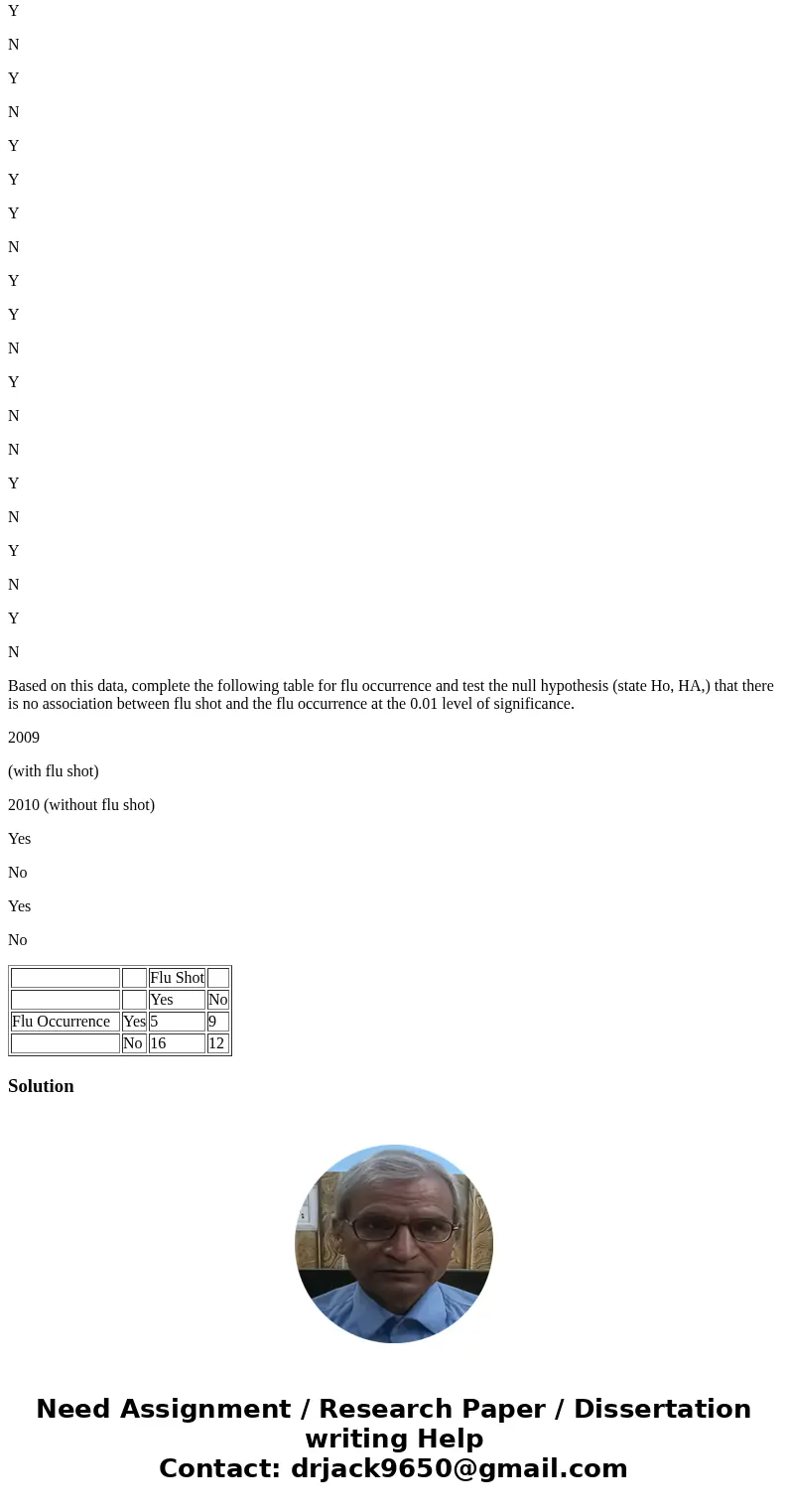A study was conducted to evaluate the relative efficacy of f
A study was conducted to evaluate the relative efficacy of flu shot in preventing flu each year in college students. In 2009, a group of college students who took flu shot were asked whether they had flu that year. In the same year, a different group of college students who did not take flu short were asked the same question. The results are show in the following table:
12
a) In 2010, the first group of college students (those who took flu shot in 2009) were asked to NOT take flu shot. They were then asked to report whether they had flu in 2010. The results of flu occurrence in 2009 and 2010 are shown below for each student in that group, with a Y denoting “Yes” for flu occurrence and a N denoting “No” for flu occurrence:
Student
1
2
3
4
5
6
7
8
9
10
11
12
13
14
15
16
17
18
19
20
21
2009
Y
N
N
Y
N
N
N
N
Y
N
N
N
Y
N
N
N
N
Y
N
N
N
2010
N
Y
N
Y
N
Y
Y
Y
N
Y
Y
N
Y
N
N
Y
N
Y
N
Y
N
Based on this data, complete the following table for flu occurrence and test the null hypothesis (state Ho, HA,) that there is no association between flu shot and the flu occurrence at the 0.01 level of significance.
2009
(with flu shot)
2010 (without flu shot)
Yes
No
Yes
No
| Flu Shot | |||
| Yes | No | ||
| Flu Occurrence | Yes | 5 | 9 |
| No | 16 | 12 |
Solution



 Homework Sourse
Homework Sourse